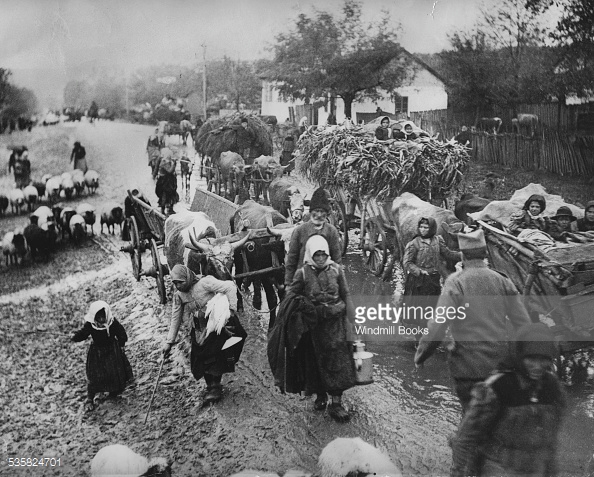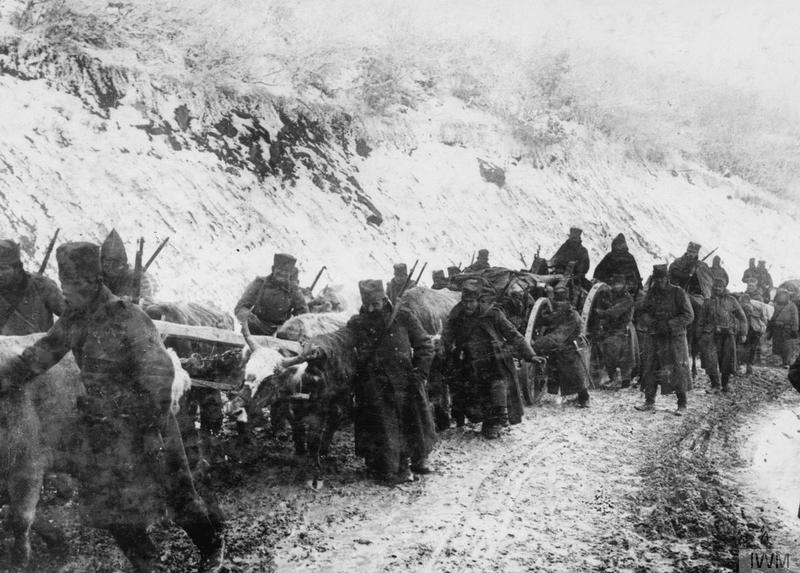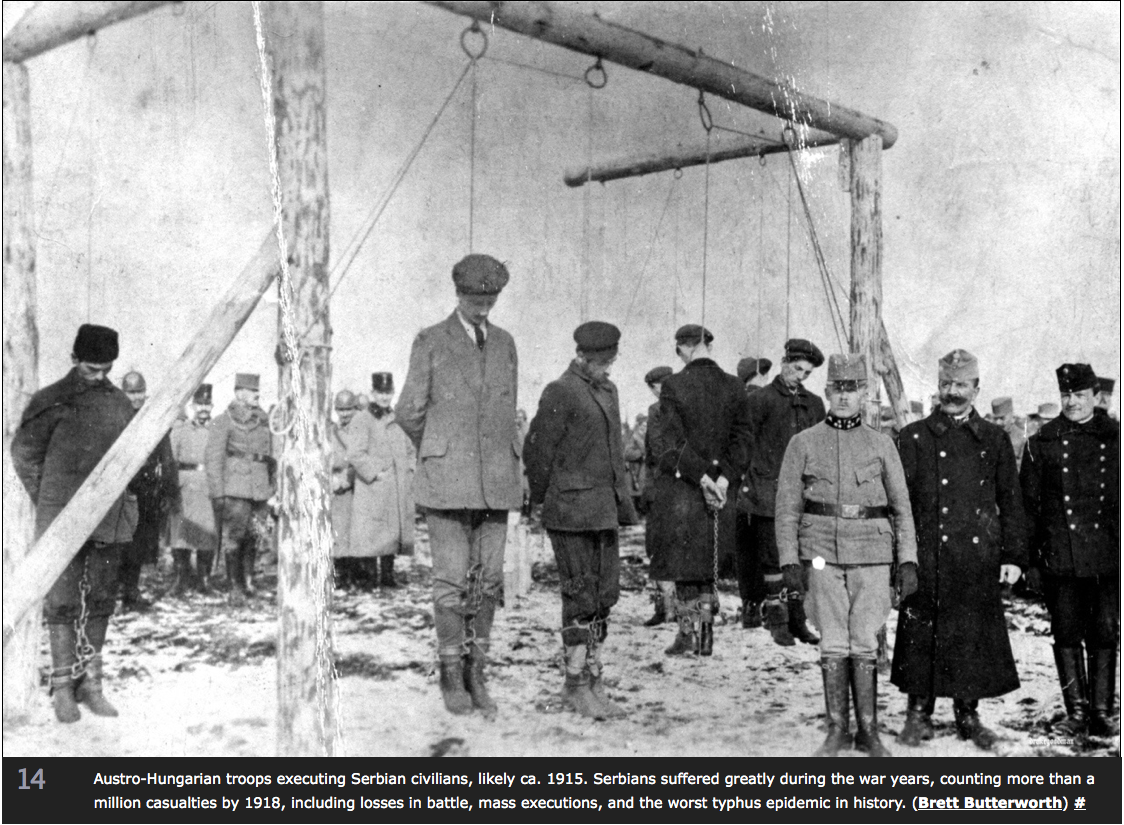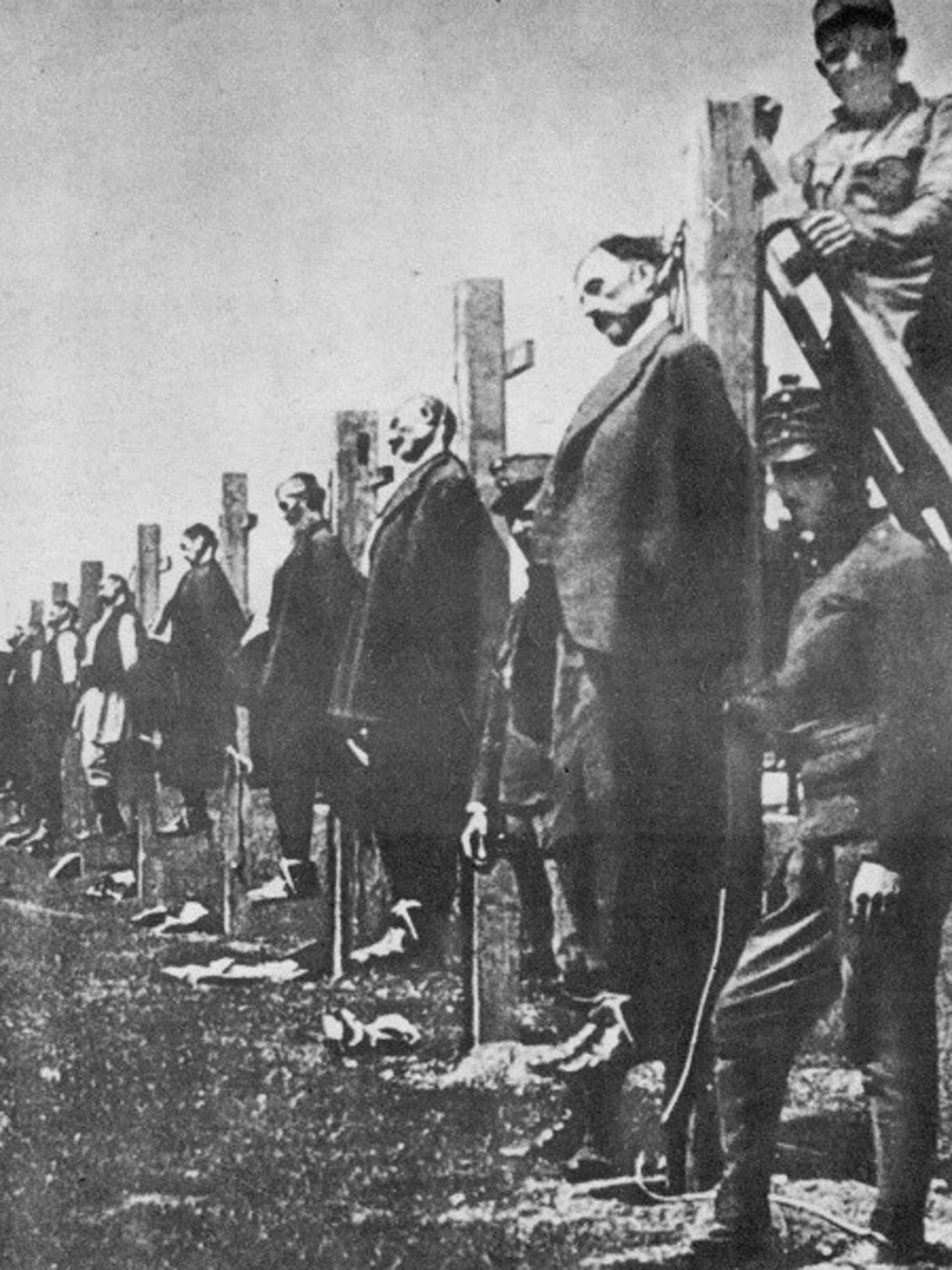Conditions for Serb Forces Disastrous; Typhus Spreads Among Troops.
Hatred of Austrians the Glue that Holds the Serbs Together.
Special to The Great War Project
(11-15 February) By this time one hundred years ago, Serbia, the land where the war started, is nearly defeated and occupied by the Central Powers, Germany and Austria-Hungary.
This is the result of Austria’s third invasion of Serbia. Earlier in the war, Austria has little success suppressing Serbia’s small but tough army.
But now, running out of artillery shells, Serbia’s situation is dire, even fighting the weak Austrian army.

Refugees during Serbian retreat to Macedonia, late 1915
“This was a serious invasion,” writes historian Geoffrey Wawro, “if only because the Serbs, fighting their third war in as many years, had finally exhausted their shell stocks and had little hope of resupply from their allies,” Russia, France, and Britain.
The Allies are seriously disadvantaged by geography. There is no easy way to ship munitions to landlocked Serbia.
Observes one senior Serbian commander, “The enemy is bombarding our trenches and we have nothing to fire back. My men are dying under this fire and I have no reserves to replace them.”

Serb army in retreat to Albania, circa late 1915.
The local Serbian commander is so distraught that he asks removal from his battlefield command.
The request is denied.
To make matters worse, rain is swamping the valleys and covering the mountains with snow. Conditions are horrible, especially for those troops – and the wounded — who must sleep in the open, with no medical attention.
“They were left on straw in peasant huts,” reports Wawro, “writhing in pain, thousands of them, all over the backroads of Serbia, wherever a battle had flared.”
Now an epidemic of typhus breaks out in Serbia. The disease will “end up killing one-third of the population of Serbia.” Even when wagons are available for the sick, they are not permitted on them, for fear of spreading the disease to new areas.
Given this disastrous situation, Austrian troops make rapid progress in the war against Serbia….at first.
Serbia is desperate. “The Serbs were down to their last 200,000 men,” writes Wawro.” Serbian troops also mutiny at strategic points. Sixty-year-old men are pressed into the army, to replace all the younger men who are dead.
Serbia’s retreat leads to atrocities by the Austrian army. One battlefield commander orders his men, “our goal is the destruction of the enemy armed forces, not the destruction of the entire enemy population.”

Serbs executed by Austrians, late 1915.
This same commander “called for an end to rapes, plunder, the desecration of enemy corpses, and the mistreatment of enemy wounded,” writes Wawro.
The Austrians harbor a violent hatred of the Serbs, and given the Serbian guerrilla-like tactics, the Austrians mark all Serbians, soldier or civilian, as soldiers and therefore legitimate targets.
As a result, reports Wawro, units are ordered to “drive all Serbs before the front; not a single Serb can be allowed to remain behind the lines.”
In some cases, Austrian troops are ordered to burn whole villages.
An American journalist, reaching the front in Serbia, describes the “bestiality” of the war there. He ascribes that to “the unique Austrian hatred of Serbia.”
Conditions for Austrian soldiers fighting in the Serbian mountains are not much better. Writes Wawro, “Rear echelon troops, stumbling along in their straw-wrapped feet – some are even marching barefoot – found that men in front were abandoning machine guns, shells, and ammunition so as not to have to lug them through the mud and snow.”
One soldier reports that “the soldiers are considering suicide…how much longer can this continue?”

Serb civilians captured and executed at Austrian front line, date uncertain.
According to Wawro’s account of the war in Serbia, miraculously despite the retreat into Greece and Montenegro, the morale of the Serbs is good. After months of desperation, they are finally resupplied with French and Russian weapons.
Writes Wawro…
“hatred of Austria-Hungary was the glue that held them together.”
By the beginning of 1916 a century ago, the Serbs are back in control of Belgrade, their capital. The Austrian army is finished.
